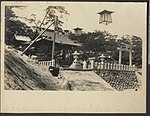HY Tailor
HY Tailor or Han Young Tailor (Korean: 한영양복점; RR: Hanyeong yangbokjeom) is a historic tailor shop in Seoul, South Korea. It was established in 1932, and specializes in customized suits. In 2012, it was designated a Seoul Future Heritage. It is also a designated Oraegage, a store of historic value. The shop has been visited by both major South Korean politicians, including presidents Kim Dae-jung and Moon Jae-in, and by foreign politicians, including Japanese prime minister Tomiichi Murayama. The store was established by a Park Jeong-jae (박정재). During the 1950–1953 Korean War, the business went on hiatus as Park fled to Busan for safety. Lee Seong-ho (이성호) took over the business in 1964, and moved it to a new location in 1968. In 1995, Lee passed the business onto his son, Lee Han-yeol (이한열). In 2008, the business was jointly acquired by Choi Hong-gap (최홍갑) and Kim Gil-su (김길수). Kim opened another location of the business in 2011, within the Pacific Hotel. Choi's location closed in 2013. In 2017, it was reported that the business was having difficulty obtaining a successor. The store reportedly encountered some difficulty during the COVID-19 pandemic.
Excerpt from the Wikipedia article HY Tailor (License: CC BY-SA 3.0, Authors).HY Tailor
Toegye-ro 20-gil, Seoul Myeong-dong
Geographical coordinates (GPS) Address Nearby Places Show on map
Geographical coordinates (GPS)
| Latitude | Longitude |
|---|---|
| N 37.5597 ° | E 126.9854 ° |
Address
본도시락 명동점
Toegye-ro 20-gil 2 (남산동2가, 퍼시픽호텔 1층)
04629 Seoul, Myeong-dong
South Korea
Open on Google Maps










